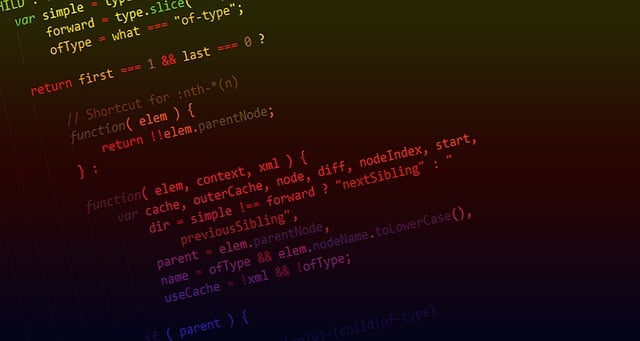In today's digital age, affordable web design offers small businesses an opportunity to compete with larger corporations by providing essential features and clean aesthetics without extravagant costs. This is achieved through streamlined processes, ready-made templates, content management systems (CMS), and responsive design. Open-source tools like WordPress and Bootstrap, along with minimalism, optimize user experience while reducing complexity. Success stories from various industries demonstrate the effectiveness of budget-friendly web solutions. The future looks bright for affordable web design, with AI, mobile-first indexing, and AMP pages enhancing accessibility and performance without extra fees.
In today’s digital landscape, a robust online presence is paramount for businesses to thrive. However, many small enterprises shy away from building websites due to perceived high costs. This article demystifies affordable web design, exploring strategies and tools that empower businesses to establish strong digital footprints without breaking the bank. From open-source platforms to efficient project management, we delve into cost-effective solutions that deliver high-quality results, ensuring accessibility and success for all.
Understanding Affordable Web Design: Defining Budget-Friendly Solutions

In today’s digital era, a well-designed website is no longer a luxury but a necessity for businesses and individuals alike. However, the cost of web design can often be prohibitive, especially for startups and small enterprises with tight budgets. Understanding affordable web design means recognizing that quality doesn’t always equate to extravagance. Budget-friendly solutions focus on delivering essential features, clean aesthetics, and optimal user experience without breaking the bank.
Definingly, these solutions may streamline certain processes, utilize ready-made templates, or employ cost-effective development strategies like content management systems (CMS) and responsive design. By embracing these approaches, businesses can secure a professional online presence while preserving financial resources for other critical areas of their operations. Ultimately, affordable web design is about finding the perfect balance between functionality, aesthetics, and affordability.
The Impact of Cost-Effective Web Services on Small Businesses

Small businesses often face unique challenges when it comes to their online presence, as creating and maintaining a professional website can be a significant financial burden. However, the emergence of budget-friendly web solutions has levelled the playing field, allowing even the smallest enterprises to establish a strong digital footprint. Affordable web design services play a pivotal role in this transformation, offering high-quality yet cost-efficient options that cater specifically to the needs of startups and micro-businesses.
By implementing these cost-effective web services, small businesses can gain access to essential tools for marketing, customer engagement, and sales. From user-friendly content management systems to robust e-commerce platforms, these solutions empower entrepreneurs to create dynamic websites without breaking the bank. As a result, business owners can focus on what they do best—growing their operations and serving their customers—while leaving the technical aspects to reliable and affordable web design providers.
Key Strategies for Delivering High-Quality, Low-Cost Website Designs

Creating high-quality, yet budget-friendly website designs requires a strategic approach that balances aesthetics and functionality. One key strategy is leveraging open-source tools and templates, which offer a wide range of features at no cost. By utilizing pre-built components and customizable code, designers can create unique and visually appealing sites without breaking the bank.
Another effective tactic is implementing minimalism, focusing on clean layouts, clear typography, and concise content. This approach not only reduces design complexity but also enhances user experience by making information easily accessible. Additionally, optimizing images, using responsive design principles, and prioritizing fast loading times contribute to delivering efficient and cost-effective web solutions that meet users’ needs without compromising quality.
Exploring Open-Source Tools and Platforms for Web Development

In the quest for budget-friendly web solutions, exploring open-source tools and platforms can be a game-changer for both businesses and individuals looking to create or enhance their online presence without breaking the bank. Open-source software offers a wealth of options for web development, from content management systems (CMS) like WordPress and Drupal, to code editors such as Visual Studio Code and Atom. These tools are not only free but also backed by vibrant communities that provide continuous support, updates, and resources, ensuring users receive up-to-date and reliable technology.
By leveraging open-source platforms, businesses can achieve affordable web design without sacrificing quality or functionality. For instance, WordPress powers a significant portion of the web, offering thousands of customizable themes and plugins to suit various needs and budgets. Similarly, tools like Bootstrap and Tailwind CSS make responsive web design accessible, allowing developers to create visually appealing sites quickly and cost-effectively. This approach not only cuts down on development costs but also promotes agility, as open-source projects often have rapid release cycles, keeping your website modern and secure.
Case Studies: Successful Implementation of Budget-Friendly Web Solutions

Many businesses, especially startups and small enterprises, often assume that creating a robust online presence requires a substantial budget. However, this isn’t always the case. There are numerous success stories of companies that have thrived in their respective industries by implementing budget-friendly web solutions. These strategies have enabled them to compete with larger corporations without breaking the bank.
For instance, consider a local bakery that launched its e-commerce website using open-source platforms and cost-effective hosting services. By employing affordable web design techniques, they created an engaging online store, increased their customer base, and expanded their business reach. Similarly, a non-profit organization successfully raised funds and gained volunteers through a well-optimized, low-cost website that highlighted their mission and impact. These case studies demonstrate that with creative thinking and the right tools, budget-friendly web solutions can drive significant results.
Future Trends in the Affordable Web Design Industry

The future of affordable web design is poised for exciting developments as technology continues to evolve at a rapid pace. One prominent trend is the increased adoption of artificial intelligence (AI) and machine learning, which can automate various aspects of web design, making it more accessible and cost-effective. AI-powered tools can generate custom layouts, suggest color palettes, and optimize content for search engines, thereby reducing the time and resources required for manual design work.
Additionally, there’s a growing emphasis on responsive design that adapts seamlessly to different devices and screen sizes. With the majority of internet users accessing websites through mobile phones, this trend ensures that affordable web designs are not only budget-friendly but also user-friendly and accessible across all platforms. Mobile-first indexing and accelerated mobile pages (AMP) will play a significant role in enhancing website speed and performance, contributing to a better user experience without breaking the bank.
